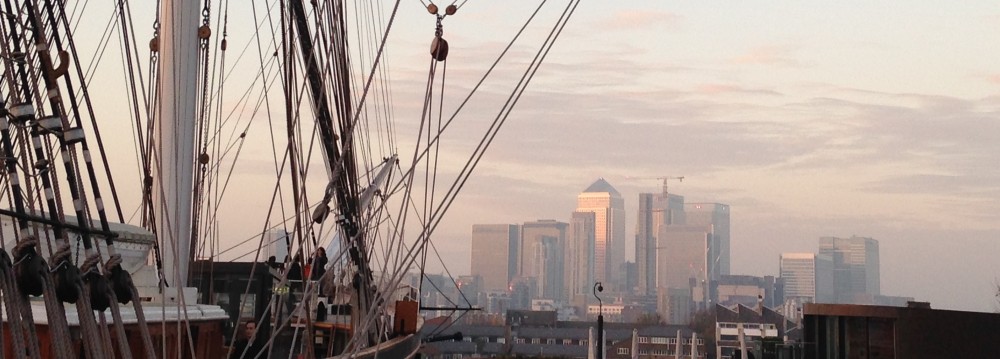Tradition of French-American Cultural Exchange
Since the early days of the French and American republics, their political relations have been intense, vacillating between amity and periodic squabbles. Cultural ties, however, have been more consistently positive. From the Marquis de Lafayette to Patti Smith and beyond, there is a long tradition of French and Americans crossing the Atlantic and contributing to the cultural life in both countries. French-American cultural exchange plays an active and on-going role in intellectual cross-fertilization between the countries, contributing to wide-ranging developments such as the US Constitution and the rise of hip-hop in France. Much of this exchange is spontaneous, but some of it is more structured and supported via programs such as the Fulbright program for academic exchanges.
While French-American cultural exchange takes place through a variety of channels, its scale is quite significant. One indication of the scale can be found in Disneyland: In 2012, Disneyland Paris was the top tourist destination in France with 16 million visitors (though, of course, just a fraction of the visitors were French). Another indication can be found in several recent best-selling histories by authors such as David McCullough (1) and Stacey Schiff (2) documenting numerous exciting stories of the deep French-American cultural ties over the centuries.
A recent example
Living as an American in Paris, one has the opportunity to participate directly in the dynamic cross-cultural relationship between France and the United States through a variety of institutions. This weekend, for example, two wonderful institutions — the Mona Bismarck Center for Art and Culture and the Fulbright alumni association — came together to offer a great cross-cultural experience in the form of a guided tour of the first exposition in France of a special collection of Mary Cassatt’s etchings, drawings and pastels.

US stamp (ca. 1966) shows a picture of “The boating party” by Mary Cassatt
Photo credit: rook76 / Shutterstock.com
Mary Cassatt (1844-1926) is a prime example of such cross-cultural ties. She was the only American among the leading Impressionist artists in France. She was an extraordinary artist who pioneered new approaches for etchings and pastels, for which she was awarded the French Chevalier de la Legion d’Honneur in 1904. This was an amazing achievement, particularly given that she was an immigrant working in a foreign culture in field that was at the time largely male-dominated.
Fulbright and Bismarck
The Fulbright program as founded after WWII at the initiative of US Senator J. William Fulbright with the objective of promoting mutual understanding. The program sponsors students and faculty wishing to study, research or teach abroad; it supports Americans going abroad as well as foreigners coming to the USA. In France, it is supported by both the US and French governments.
As an alumnus of the Fulbright Fellowship program (Germany, 1979-80), the chance to belong to the Fulbright alumni association in Paris gave me a ready-made social group and access to the flow of cross-cultural exchange here including the Cassatt exhibition. The Fulbright alumni association helps to renew the Fulbright experience in an ongoing fashion via cross cultural events. An annual reunion of alumni and celebration of those going or coming under the program is attended by hundreds of folks at the residence of the American ambassador in Paris. The depth of cross-cultural good will at the reunion events is evidence of the potential for such programs to bridge international divides.
Mona Bismarck (1897-1983) is an example of an American expatriate who left a legacy promoting cross-cultural understanding: the Mona Bismarck American Center for Arts and Culture. Bismarck grew up on a horse farm in Kentucky and was a wealthy American heiress. A socialite with extraordinary connections, she worked to promote friendship between France and the United States. After the death of her first husband, American industrialist Harrison Williams, she married Edward Bismarck, the grandson of former German Chancellor Otto von Bismarck. The Foundation and center that she established have carried on after her death to promote Franco-American friendship via exhibitions, events, educational programs and hosting non-profit associations. There is a steady stream of cross-cultural activity at the Center, which is located in a villa on the Seine with a stunning view of the Eiffel Tower.
Why it matters
Institutions such as the Fulbright Fellowship program and the Mona Bismarck American Center deliver substantive and qualitative programs that help to expand peoples’ horizons. Such cross-cultural exchange can be positively transformative for individuals, broadening their perspectives and range of experience. I think this cross-cultural exchange also helps society more broadly. The influence of institutions such the Fulbright Program and Mona Bismarck American Center is amplified in France and the United States in that they deliver benefits beyond the direct participants. Indirectly, the larger circle of professional contacts, friends and families of participants is also influenced. From anecdotal evidence and experience at French-American cultural events, it certainly appears that this outreach to the larger society helps to provide learning opportunities, combat prejudices and promote mutual understanding. And that is in all of our interests!
=============
(1) David McCullough (2011), The Greater Journey: Americans in Paris, Simon & Schuster.
(2) Stacy Schiff (2005), The Great Improvisation: Franklin, France, and the Birth of America.
